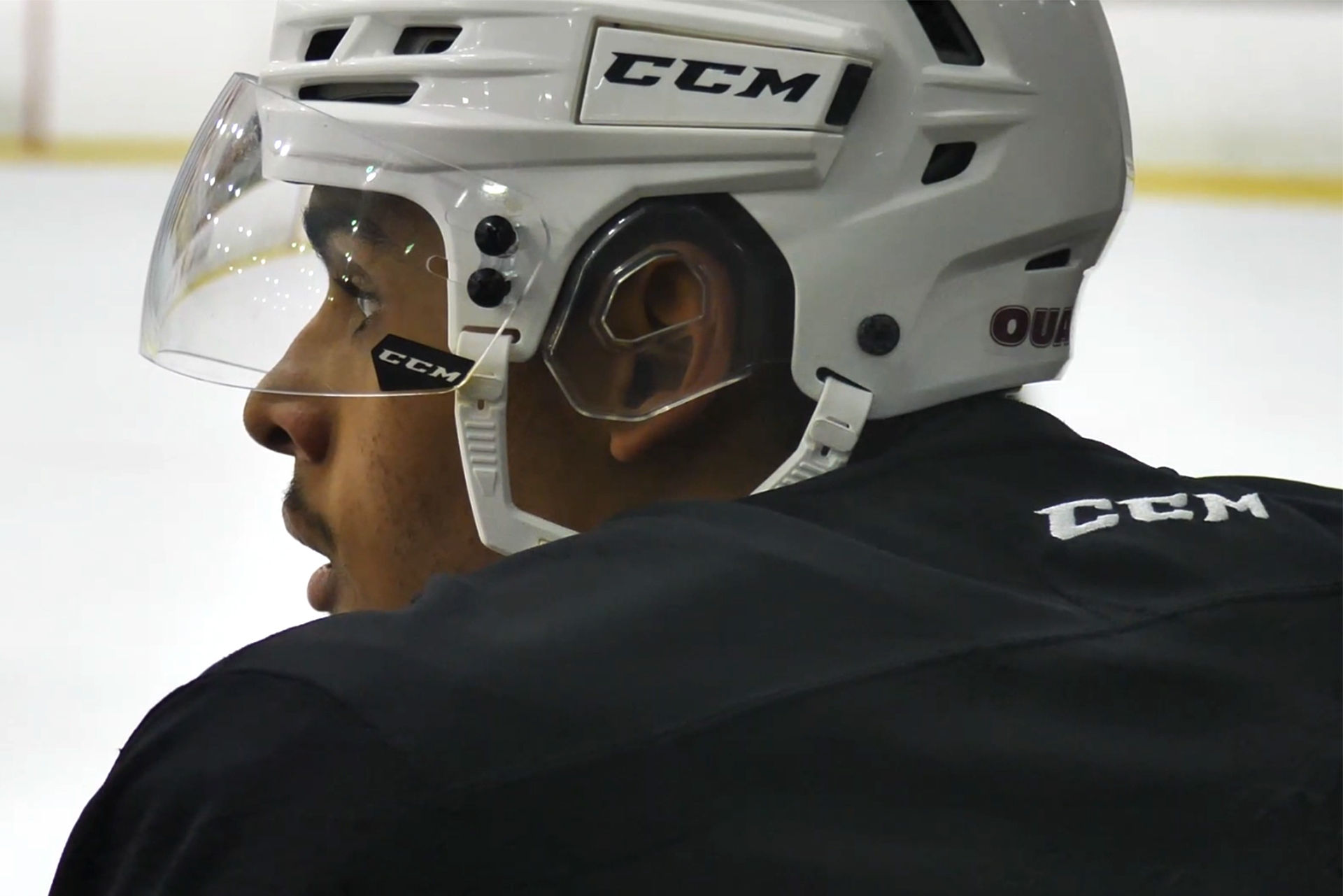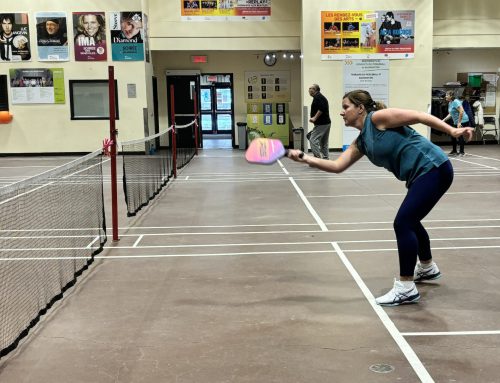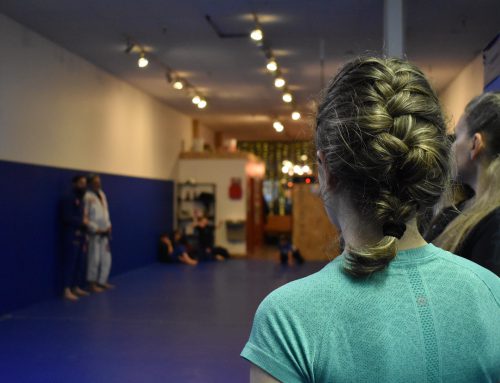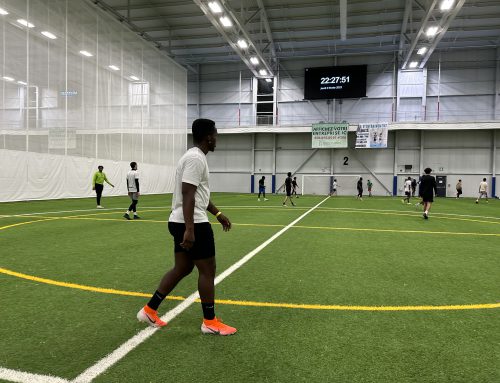BY Valerie Bayeur & Massimo Baruffa
“I feel like I got a target on my back,” says Concordia Stingers hockey player Isiah Campbell.
Campbell played in the Quebec Major Junior Hockey League from 2016 to 2021 and says he’s experienced racism during his junior career.
When Campbell was on a road trip to Quebec with his team, the Victoriaville Tigers, a referee made a comment about him and another player.
“I was at the face-off dot with another player who was the same colour as me. One of the refs said, ‘You guys are brothers.’ It kind of threw me off guard a little bit,” Campbell says.
Although Isiah did receive an apology from the referee, he still felt like it wasn’t handled the way it should have been.
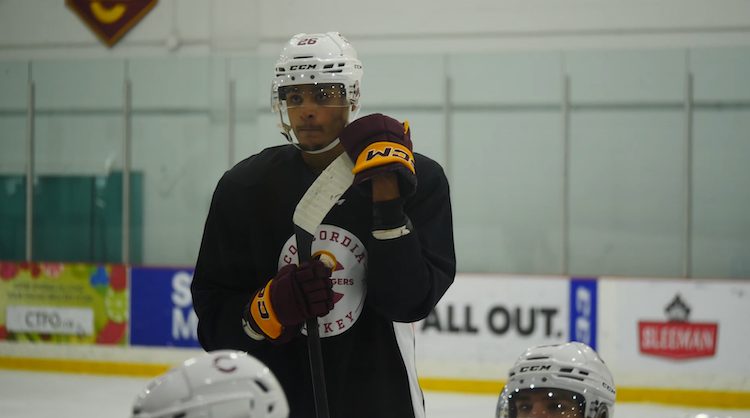
Isiah Campbell listening to his coach during practice. Photo by Valerie Bayeur.
The long-standing hockey culture in the province is receiving political attention after multiple incidents were reported.
In February 2023, the members of the Parliament of Canada summoned hockey leagues and McGill after revelations of disturbing hazing, including sexual assault, became public.
“There’s a culture that dates back decades ago that’s always encouraged, supported, or sanctioned some of the behaviours we have witnessed in recent media publications and confirmed that these actions, unfortunately, took place,” says sports marketing expert Ray Lalonde.
Fortunately for Campbell, these events never took place in his locker room.
“When I was playing, I always had tight teammates. We were all close to each other. We never had any problem with hazing. We had some rookie parties for sure, but it was all fun,” he says.
However, the reason rituals of initiations take place, according to Brock University professor Taylor Mckee, is partly due to the fact that these boys are sent into a hockey machine at a very young age.
“These kids are dislocated from family structures, they’re dislocated from authority structures, and they’re put into these hockey locker rooms, which are not perfect spaces,” he explains.
According to Mckee, locker rooms are sometimes referred to as homosocial places. Moreover, he mentions that these rooms don’t look like your typical Canadian environment, in the sense that there isn’t a lot of diversity, which could affect these players’ behaviours.
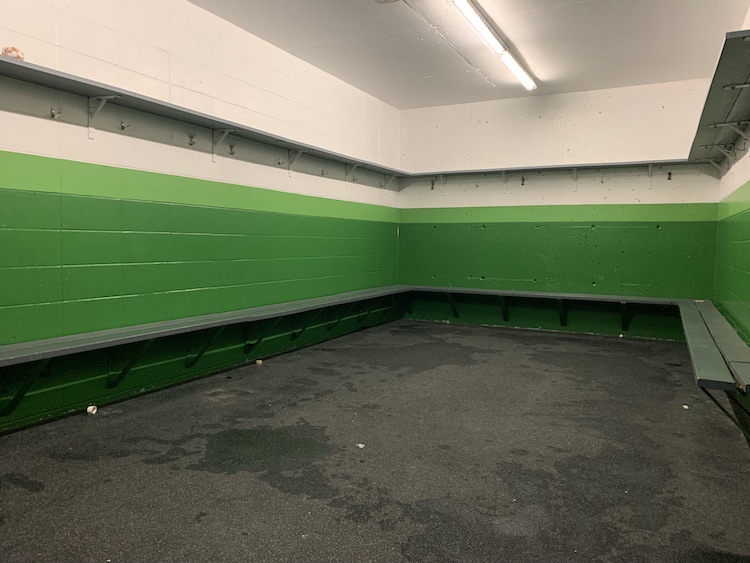
Empty locker room in the St-Catherine arena. Photo by Valerie Bayeur.
“There’s this notion that young hockey players think ‘everyone looks like me and thinks like me and speaks like me,’ so when someone comes in who’s not a part of that group, [young hockey players think] ‘I’m entitled to a little bit of policing of that space on behalf of my in-group,’” explains Mckee.
It is the responsibility of the captain to make sure that everyone performs well, under the coach’s instructions. They are supposed to be leaders off the ice as well, but sometimes aren’t equipped to deal with all the issues, according to Mckee.
“The problem is that every sport, every facet of life would be better off with leaders who are enlightened, and sport doesn’t necessarily attract these people,” he says.
The solution to fix the hazing in hockey is much more about inclusivity, according to Mckee.
“From a hazing point of view and from a sexual abuse point of view, these are issues that need to get fixed by October,” he says. “We’ve got to fix these things immediately.”
Sébastien Arcand, associate director of HEC Pôle sports, agrees that locker rooms can have a negative effect on the player’s behaviours.
“It’s conducive to all that violence, whether it’s racist comments or otherwise,” says Arcand.
Hockey is a fast-paced, high-collision sport that could lead to some impactful injuries. Video by Massimo Baruffa.
In response to these events, Hockey Quebec and the Quebec Major Junior Hockey League (QMJHL) have decided to install a 5-game suspension for anyone who violates the anti-discrimination policy.
“We have said it and we repeat it, there is zero tolerance for all forms of discrimination and violence,” says Mathieu Durocher, press officer for the office of the Minister responsible for Sports, Recreation, and the Outdoors.
“To eradicate these behaviours, we must focus on education and awareness, yes of the players themselves, but also the coaches, staff, and all stakeholders” he adds.
Campbell also believes that players should be suspended when these events happen.
“You shouldn’t be playing hockey for that whole year or something severe where it kind of catches you off guard. [The hockey leagues] definitely have got to put their foot down,” says Campbell.
The controversies surrounding junior hockey in Quebec might have a bigger consequence than we think. Not only is it bad for the image, but the number of kids joining Quebec leagues is dropping.
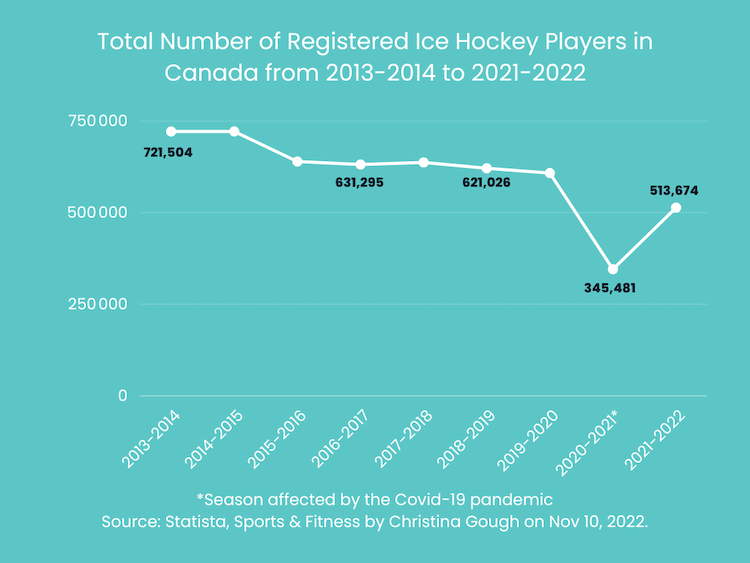
Total number of registered ice hockey players in Canada from 2010-11 to 2021-22.Photo by Valerie Bayeur.
Hockey mom Sophie Fortin doesn’t understand how things like the hazing incidents were allowed to happen in the first place.
“I can’t believe the coaches, assistant coaches, and trainers didn’t know. I can’t believe they hadn’t taken action, either. They are the ones with the kids,” she says.
Her son, Isaak Hunter, currently plays Midget Espoir at Charles-Lemyone College, which is the second-highest level of hockey in his age group in Quebec. In his few seasons at CCL, Isaak has never experienced or witnessed any hazing or racism.
“I’ve seen initiations before, like shaving your hair,” says Hunter. “But sexual assault or whatever? I’ve never seen any.”

Home team playing the puck in their defensive zone. Photo by Valerie Bayeur.
Even after hearing about the rituals, Isaak still feels comfortable playing hockey, but it depends on where he plays.
“If you’re somewhere where you have a good structure and the guys are nice, I’d still want to play, but if something like that happens, I would report it immediately,” says Hunter.
